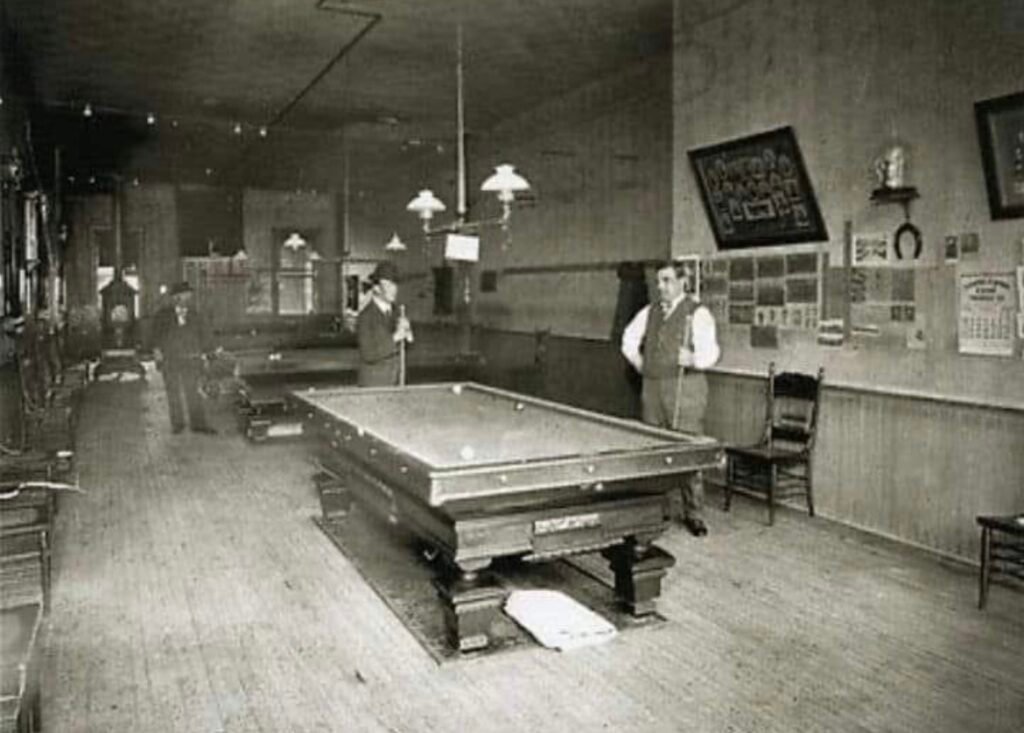
Picture this: it’s the late 1800s, and the streets are bustling with life. But amidst the hustle and bustle, there’s a hidden gem tucked away in the heart of town – the 1890 Pool Hall Billiards. As I step through the doors of this historic establishment, I can’t help but feel like I’ve stepped back in time. The air is thick with the smell of aged wood and the sound of clacking balls echoes through the room. It’s not just a place to shoot some pool; it’s a piece of history, a gathering place, and a whole lot of fun rolled into one.
But hey, before we dive into the fascinating world of vintage pool halls, let’s take a quick detour to explore some other intriguing pieces of history. Ever heard of Kansas City’s oldest traffic light still in action? Yeah, it’s a real thing, and it’s been shining through time for over a century. And speaking of icons, who could forget the legendary Betty White? From child star to beloved icon, her tale is one for the ages. And let’s not overlook the role of filling stations in fueling the roaring twenties in New York City. Now, that’s some history worth filling up on. So, buckle up, folks, because we’re about to embark on a journey through time and uncover the secrets of the 1890 Pool Hall Billiards.
Next up, let’s delve into the rise of pool halls in the late 19th century and uncover the social significance behind these iconic establishments.
The Rise of Pool Halls in the Late 19th Century
Back in the late 1800s, pool halls were more than just places to shoot some pool – they were the beating heart of communities. As cities grew and urban life flourished, people from all walks of life found themselves drawn to these vibrant hubs of activity. It wasn’t just about the game; it was about the camaraderie, the sense of belonging, and the shared experiences that made pool halls so special.
Now, let’s rewind the clock and take a closer look at the social significance of pool halls in the late 19th century. Back then, these establishments weren’t just places to play a game; they were social hubs where friendships were forged, stories were swapped, and memories were made. And speaking of memories, who could forget the iconic St. Louis Cardinals logo? It’s a symbol of triumph and tradition that has stood the test of time. But I digress – let’s get back to our journey through the history of pool halls.
So, grab your cue, chalk up your tip, and join me as we explore the rise of pool halls in the late 19th century. It’s a story that’s as colorful and captivating as the game itself.
The 1890 Pool Hall Billiards: A Snapshot of History
Step inside the 1890 Pool Hall Billiards, and you’ll feel like you’ve stepped into a time capsule. This iconic establishment is more than just a place to play pool – it’s a living, breathing piece of history. From the moment you walk through the doors, you’re transported back to the late 19th century, when pool halls were at the height of their popularity.
Now, let’s take a closer look at what makes the 1890 Pool Hall Billiards so special. From its vintage decor to its warm, inviting atmosphere, this place has a charm that’s hard to find anywhere else. And speaking of vintage charm, have you ever seen an antique-style globe that enhances your knowledge? If not, you’re in for a treat. Check out our article on the antique-style globe that’s sure to spin your world around. But I digress – back to the 1890 Pool Hall Billiards.
The tables are smooth as silk, the lighting is just right, and the sound of clacking balls fills the air. It’s a place where time seems to stand still, and every game is a journey through history. So, grab a cue, take your shot, and become a part of the storied legacy of the 1890 Pool Hall Billiards.
The Culture of Pool Halls in the Late 1800s
In the late 1800s, pool halls were more than just places to play games – they were vibrant centers of culture and community. From bustling cities to small towns, these establishments drew people from all walks of life, united by their love of the game and their desire for connection.
Now, let’s dive deeper into the culture of pool halls during this time period. Picture this: dimly lit rooms, the smell of chalk in the air, and the sound of laughter echoing off the walls. It was a place where rivalries were born, friendships were forged, and stories were shared. And speaking of stories, who could forget the legendary tale of Betty White? From child star to beloved icon, her journey is one for the ages. Check out our article on Betty White for a trip down memory lane. But I digress – let’s get back to the fascinating world of late 19th-century pool halls.
Whether you were a seasoned pro or a newcomer looking to learn the ropes, there was a place for you at the pool hall. It was a place where social status didn’t matter, and everyone was welcome to join in on the fun. So, grab a cue, chalk up your tip, and immerse yourself in the rich culture of pool halls in the late 1800s.
Preserving the Legacy
While the bustling pool halls of the late 1800s may be a thing of the past, their legacy lives on through preservation efforts and cultural appreciation. Historic establishments like the 1890 Pool Hall Billiards serve as reminders of a bygone era, where camaraderie and competition thrived in equal measure.
Now, let’s take a moment to reflect on the importance of preserving these cultural landmarks. As time marches on, it’s easy to forget the significance of places like the 1890 Pool Hall Billiards. But thanks to dedicated efforts to safeguard these historic sites, future generations can continue to experience the magic of vintage pool halls. And speaking of preservation, have you ever wondered about the evolution of iconic logos? Dive into our article on the St. Louis Cardinals logo for a fascinating look at one team’s journey through history. But I digress – back to our discussion on preserving the legacy of pool halls.
By preserving these historic establishments, we not only honor the past but also enrich the present and inspire the future. So, the next time you walk past a vintage pool hall, take a moment to appreciate the history and heritage that lies within its walls. After all, it’s more than just a building – it’s a testament to the enduring spirit of community and camaraderie.
The Cost of Playing Pool Back Then
In the late 1800s, playing pool wasn’t just about having a good time – it also came with a price tag. While the exact cost varied depending on factors like location and establishment, playing a game of pool typically required players to fork over a small fee.
Now, let’s break down the cost of playing pool back in the day. Picture this: you walk into your favorite pool hall, eager to test your skills on the felt. But before you can rack ’em up, you’ve got to pony up. The cost of a game could range anywhere from a few cents to a quarter, depending on the venue and the stakes involved. And let’s not forget about the cost of equipment – cue sticks, chalk, and other accessories didn’t come cheap. It was a small price to pay for a chance to join in on the action, though.
Despite the financial barrier to entry, playing pool was a popular pastime for people of all backgrounds. Whether you were a wealthy businessman or a factory worker, everyone could come together and enjoy a game or two. So, the next time you’re tempted to complain about the cost of entertainment, just remember – it’s nothing compared to the price of a game of pool in the late 1800s.
The Popularity of Pool in the Late 1800s
In the late 1800s, pool wasn’t just popular – it was practically a national obsession. From bustling cities to remote towns, you’d be hard-pressed to find a community that didn’t have at least one pool hall. This wasn’t just a passing fad; it was a cultural phenomenon that captured the hearts and minds of people from all walks of life.
Now, let’s dive into just how popular pool was back in the day. Picture this: you walk down the street and pass by one pool hall after another, each one bustling with activity and excitement. It seemed like everyone was getting in on the action, from factory workers looking to unwind after a long day to businessmen striking deals over a game of eight-ball. And let’s not forget about the ladies – they were just as skilled on the felt as their male counterparts. Pool wasn’t just a game; it was a way of life.
The popularity of pool in the late 1800s wasn’t just confined to the United States, either. Across the pond, in places like Europe and Australia, pool halls were also thriving, drawing in crowds eager to try their hand at the game. It was a global phenomenon that transcended borders and brought people together in pursuit of one common goal: sinking that final ball and claiming victory. So, the next time you step into a modern-day pool hall, take a moment to appreciate the rich history and tradition that lies behind this beloved pastime.
As an Amazon Associate we earn from qualifying purchases through some links in our articles.




